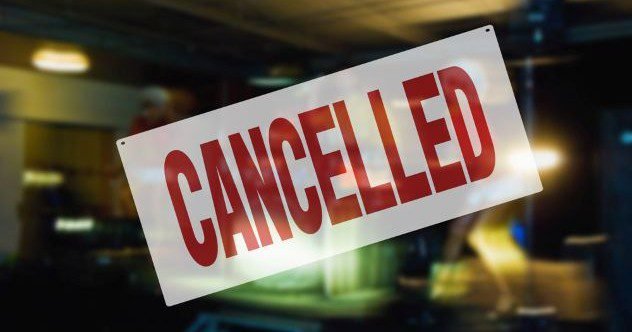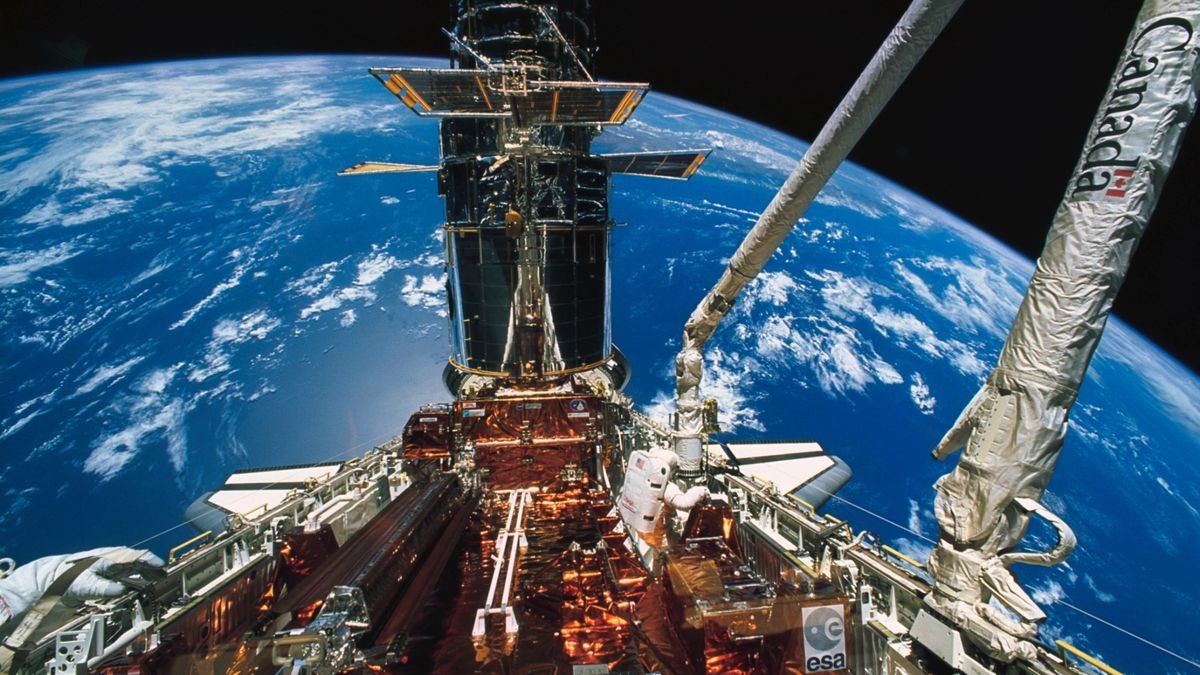Anyone who has competed in track and field at any level knows it’s easy to start out strong. What’s much more difficult is maintaining that initial burst of speed for the entire race and then finishing strong.
Some TV shows come out of the gate swinging, with strong casts, clever writing, and highly compelling plotlines. But not all of them get the chance to finish what they started. There are many reasons for poor endings: lack of proper marketing, studio interference, and often just plain bad luck. The shows on this list ended before their stories could reach a proper conclusion. What’s left behind is a frustrating mix of cliffhangers, unresolved arcs, and loyal fanbases still hoping for closure, perhaps one day through a movie, a reboot, or a revitalized version of the show with the original cast.
Unfortunately, for most of these shows, there aren’t any deep dive analysis videos on YouTube. The only surviving clips are the original trailers that were released before the shows debuted. However, these trailers are important historical records of what the shows were trying to do, and they may help to explain why their endings were not as promising as their beginnings.
Let’s explore 10 popular TV shows that started out with really good ideas, excellent casts, superior writing, and experienced production teams but were unable to execute a strong finish for various reasons.
Related: Top Ten TV Series Finales
10 Alcatraz
Alcatraz 2012 Official (Trailer)
When the Alcatraz television program premiered on Fox on January 16, 2012, producer J.J. Abrams and his Bad Robot production company were at the top of their game. They had produced the successful Cloverfield movie in 2008 and the hit Star Trek reboot in 2009. They were just a few years away from releasing the 2 billion dollar box office behemoth Star Wars: The Force Awakens in 2015.
Alcatrazwas a mystery thriller that combined elements of science fiction and procedural drama. The series began with a compelling premise. In 1963, over 300 inmates and guards vanished from the infamous Alcatraz prison, only to reappear in modern-day San Francisco without having aged a day. A special task force was assembled to track down these individuals and uncover the truth behind their mysterious return. The team included Detective Rebecca Madsen, Alcatraz expert Dr. Diego “Doc” Soto, and FBI agent Emerson Hauser.
Despite the intriguing concept and Abrams’s involvement, the show struggled to maintain its early momentum. While the premiere attracted a sizable audience, viewership declined steadily over the season. Critics noted that the series suffered from a slow narrative pace and underdeveloped characters, which made it hard for audiences to stay invested. The episodic format, which focused on a different returning inmate each week, became repetitive and limited the development of the larger storyline.
Fox canceled Alcatrazafter just one season. The finale left numerous plot threads unresolved, including the true nature of the inmates’ disappearance and the mysterious experiments involving colloidal silver. Fans were left with more questions than answers, making Alcatraza clear example of a show that started strong but ended unfinished.[1]
9 Terra Nova
Carnotaurus Makes an Entrance (Terra Nova (Ep 1)
Terra Nova was set in a dystopian future where Earth was dying. The show followed a group of colonists who traveled 85 million years into the past to rebuild human civilization. With dinosaurs roaming the landscape, hostile forces within the colony, and the shadowy “Sixers” threatening to destabilize everything, the show blended science fiction, action, and family drama into an ambitious prime-time package.
Produced by Steven Spielberg and featuring a cast led by Stephen Lang, the show was heavily marketed as a major television event. The pilot alone reportedly cost around 20 million dollars to produce, and the total budget for the season was massive by network television standards. The visual effects were a big selling point, with detailed computer-generated dinosaurs and elaborate sets built in Australia. To build hype, the show even tapped into Spielberg’s Jurassic Park legacy.
However, Terra Novafaced issues both behind the scenes and on screen. There were frequent changes in showrunners and writers, which affected the show’s creative direction. What started as a high-stakes sci-fi adventure gradually shifted toward an uneven family drama with awkward romantic subplots and inconsistent tone. Viewership dropped quickly after the premiere, and the show’s enormous cost became impossible to justify. Critics and viewers alike noted that while the concept was compelling, the execution failed to live up to expectations.
Fox canceled Terra Nova after just one season. The season finale hinted at major revelations to come, including the origins of the portal technology and the true motives of the Sixers. Still, none of those storylines were ever resolved. What remains is a bold but flawed attempt to bring cinematic science fiction to network television, remembered more for its ambition than its storytelling.[2]
8 My So-Called Life
scene from My So-Called Life (S01E12)
My So-Called Life was a coming-of-age drama that debuted in 1994. The television show quickly gained praise for its realistic portrayal of teenage life. Starring Claire Danes as 15-year-old Angela Chase, the show explored identity, peer pressure, family dynamics, and the often awkward emotional intensity of adolescence. What made it unique was its willingness to let characters be flawed, confused, and deeply human. Angela’s voiceover, often rambling and contradictory, felt like a genuine glimpse into a teenager’s inner life.
The show also broke ground in ways that were rare for the time. It portrayed working-class families, explored teenage substance use, and included one of television’s first openly gay teen characters, played by Wilson Cruz. The central trio of Angela, Rayanne, and Rickie felt like real outsiders trying to survive high school, and their shifting friendships were treated with unusual nuance. Even the adults were given depth and complexity, often showing their own emotional struggles alongside the teens.
Despite its critical acclaim and the cultural impact it had, My So-Called Lifewas canceled after just one season. ABC cited low ratings, but the show had already developed a passionate fan base that wanted more. Angela’s emotional journey was far from over, and the show ended with unresolved tensions, particularly in her relationships with Jordan and Brian. Over time, it became a cult classic, remembered not just for its content but also for how much it respected its audience.[3]
7 Pushing Daisies
Pushing Daisies (2007) Trailer
Pushing Daisies was an American comedy-drama television series created by Bryan Fuller. Fuller is also well known as a writer and creator in the Star Trek universe. He wrote for Star Trek Voyager and Deep Space Nine, and he was the co-creator of Star Trek Discovery and Star Trek Short Treks.
Pushing Daisies aired on ABC from October 3, 2007 to June 13, 2009. The show’s story followed Ned, a pie maker with the power to bring the dead back to life with a single touch. But there were rules. A second touch would kill them again permanently, and if he let them live for more than one minute, someone else nearby would die. Ned used this strange ability to help solve murders alongside a sarcastic private investigator and his once-dead childhood sweetheart, Chuck, whom he could never touch again.
From the very first episode, the show established a distinctive tone. It was romantic, macabre, colorful, and deeply emotional. It was dubbed a forensic fairytale, blending mystery, comedy, and tragedy in equal parts. Lee Pace, Anna Friel, Kristin Chenoweth, and Chi McBride gave heartfelt performances that made the quirky world feel grounded and real. Viewers fell in love with its storybook style, fast-paced dialogue, and the delicate emotional tension between Ned and Chuck, who shared an untouchable romance.
Despite critical acclaim and several Emmy wins, the show faced two major obstacles: low ratings and the 2007 writers’ strike. The strike disrupted production and damaged its already fragile momentum. ABC canceled the show after two seasons, forcing the writers to rush the ending. Large parts of the story remained unresolved, including the fate of the star-crossed lovers and the deeper potential of Ned’s powers. Over the years, the series has gained a cult following, with many fans still hoping it will one day return for a proper conclusion.[4]
6 The Society
THE SOCIETY Official Trailer (2019) Kathryn Newton, Teen Netflix TV Series HD
The Societypremiered on Netflix in 2019 and quickly developed a strong following. The show followed a group of high school students who returned from a school trip to find their entire town mysteriously empty. With no adults, Internet, or way out, the teens were forced to govern themselves and create a new society from scratch. The show explored deep questions about power, morality, justice, and survival, drawing comparisons to Lord of the Flies with a modern twist.
Unlike many teen dramas, The Societyfocused on complex characters and grounded storytelling. It tackled issues like mental health, teen pregnancy, domestic abuse, and religious conflict, all while building a tense and unpredictable mystery. The show’s strength came from its authenticity. Characters made flawed decisions and faced real consequences, which made their struggles feel believable and emotionally gripping.
Season one ended on a huge cliffhanger, revealing that the teens might be trapped in an alternate dimension while their real-world parents were shown mourning their disappearance. Netflix initially renewed the show for a second season, and production was set to begin in 2020. However, the COVID pandemic disrupted the schedule and budget, and Netflix canceled the show unexpectedly. Despite fan petitions and interest from the writers to continue the story through other media, the project stalled. What remains is a thoughtful and original drama that was canceled before it could realize its full potential.[5]
5 StartUp
STARTUP Season 1 TRAILER (2016) New Crackle Series
StartUp was an American crime drama created by Ben Ketai that premiered on September 6, 2016, on Sony’s Crackle streaming service.
The show introduced a unique, gritty concept that blended tech innovation with crime drama. It followed an unlikely trio: a desperate banker, a Haitian gang leader, and a brilliant young coder who launched a Bitcoin-like digital currency called GenCoin. Their partnership, built on necessity and mistrust, attracted the attention of dangerous rivals and a corrupt FBI agent played by Martin Freeman, whose unpredictable actions raised the tension with every episode.
The series was praised for its originality, morally complex characters, and high-stakes storytelling. Unlike most tech-themed dramas, StartUp placed its innovation at the center of a raw and often violent struggle for control and survival. It also addressed issues rarely seen in mainstream crime shows, such as systemic corruption, racial tension, and the fragility of trust between people from vastly different worlds.
Over three seasons, StartUp developed a loyal fan base. However, it remained largely under the radar because of Crackle’s limited reach. When Netflix picked up the series in 2021, it sparked renewed interest and introduced the show to a much wider audience. Despite this late surge in popularity, no continuation was announced. The series ended in 2018 with multiple unresolved plotlines, including the fate of GenCoin, the breakdown of alliances, and several cliffhangers that hinted at larger conspiracies.[6]
4 Sense8
Sense8 Season 1 – Official Trailer – Only on Netflix [HD]
Sense8 premiered on Netflix in 2015 and immediately stood out for its global scale, diverse cast, and emotionally rich storytelling. Created by the Wachowskis (the producers of The Matrix) and J. Michael Straczynski, the show followed eight strangers from around the world who suddenly became psychically linked. These sensates could share thoughts, skills, and emotions, even though they lived in different parts of the globe. The series quickly gained praise for its unique approach to connection, identity, and empathy.
What made Sense8so impactful was its science fiction concept combined with a deep human focus. It featured one of the most inclusive casts on television, prominently highlighting LGBTQ+ characters without reducing them to stereotypes. Nomi, a trans woman played by Jamie Clayton, was a central figure from the beginning, and her story was handled with dignity and care. The show also explored the lives of a closeted Mexican actor, a Korean businesswoman with a secret life as a fighter, and several others dealing with love, trauma, and family in different cultural contexts.
Despite its loyal fanbase and critical acclaim, Sense8faced major financial challenges. The cost of filming across multiple countries with the same cast was enormous, around nine million dollars per episode by season two. Although fans connected deeply with its message of shared humanity, the show struggled to justify its expenses. Netflix canceled Sense8after two seasons, prompting massive backlash and global fan protests. Netflix eventually agreed to fund a special finale episode, which helped tie up some major storylines. However, many subplots and character arcs remained incomplete. Sense8is still remembered as one of Netflix’s boldest and most emotionally resonant shows, one that ended too soon.[7]
3 The OA
The OA | Official Trailer [HD] | Netflix
When The OA premiered on Netflix in 2016, it quickly established itself as one of the most original and mysterious series on the platform. It followed Prairie Johnson, a young woman who reappeared after being missing for seven years. Once blind, she could now see. Calling herself “The OA,” which stands for “Original Angel,” she recruited a group of strangers to help her complete a strange and spiritual mission, revealing a backstory that involved captivity, near-death experiences, and the discovery of interdimensional travel.
Co-created by Brit Marling and Zal Batmanglij, the show defied traditional genre labels. It blended science fiction, metaphysics, mystery, and surrealism while exploring themes of trauma, belief, and the power of storytelling. The structure was unconventional, with episodes prioritizing mood, character, and philosophical questions over plot twists. Critics compared its dreamlike tone to the work of David Lynch, and fans appreciated the show’s trust in the audience to interpret its deeper meanings.
Season two took the story in an entirely new direction, diving deeper into alternate realities and ending with a mind-bending twist that broke the fourth wall. Just as it was expanding its narrative scope, Netflix abruptly canceled the series in 2019. The decision shocked fans and left the story unfinished, especially with the third season already outlined by the creators. Viewers launched petitions, flash mobs, and even hunger strikes in protest, but Netflix held firm. To this day, The OA remains a cult favorite and one of the most daring shows Netflix has ever produced.[8]
2 Heroes
The Devastating Downfall Of Heroes
Heroes premiered on NBC in 2006 and was an instant hit. The series followed ordinary people who discovered they had super abilities, weaving together multiple storylines that built toward a shared destiny. With its compelling characters and comic book-style structure, the first season earned critical acclaim and a massive fan following.
Unfortunately, the show struggled after its breakout debut. The 2007 writers’ strike disrupted production, and later seasons became increasingly convoluted and uneven. Viewership declined, and NBC canceled the show after four seasons.
While it technically ended with a final episode, the story was clearly far from over. Major arcs remained unresolved, and a short-lived reboot in 2015 failed to recapture the original magic.[9]
1 Firefly
Firefly Season One Trailer
When Firefly debuted on Fox in 2002, it was clear that it had something special, but it never had the chance to reach its full potential. Created by Joss Whedon, the writer and director behind Buffy the Vampire Slayer and Angel, the series blended science fiction with the grit of a classic Western. Whedon was known for sharp dialogue, genre mixing, and emotionally layered characters. He brought all that to Firefly, building a universe that felt lived-in, morally complex, and deeply human.
The story follows the crew of the spaceship Serenity, a group of smugglers and rebels trying to survive on the edge of a vast authoritarian galaxy after losing a civil war. The show featured rich world-building, a cast of memorable characters, and a fast-growing fan base. Nathan Fillion’s role as Captain Malcolm Reynolds, a hardened but principled leader, helped to launch his long career. With its mix of philosophy, politics, and personal drama, Firefly earned comparisons to Star Trek, though it offered a more rugged and ambiguous vision of the future.
Fox mishandled the show from the beginning. Episodes were aired out of order, the pilot was delayed, and the time slot lacked promotion. Ratings fell, and the network canceled the series after airing only 11 of the 14 produced episodes. Still, the show found new life on DVD, building a passionate cult following. That support led to the 2005 film Serenity, which resolved some storylines but left the broader narrative unfinished.
Whedon went on to direct The Avengers and Avengers: Age of Ultron for Marvel, but Firefly remains one of his most beloved works.[10]
fact checked by
Darci Heikkinen











